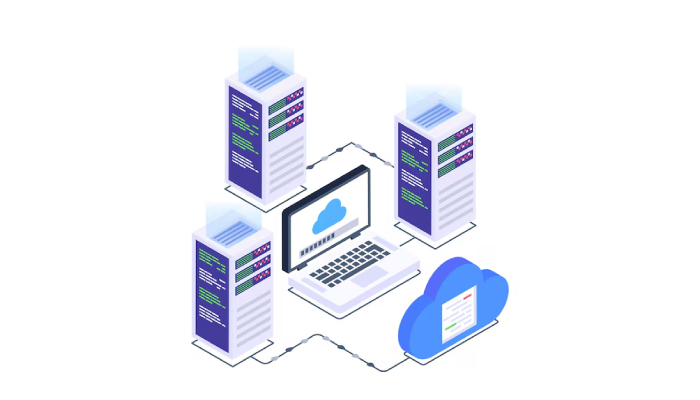5 Key Benefits Of Using An Application Load Balancer For Cloud Services
In the rapidly evolving world of cloud computing, businesses and organizations are increasingly relying on cloud services to enhance their operations and deliver better user experiences. One of the critical tools in ensuring seamless, reliable, and efficient cloud operations is the Application Load Balancer (ALB). By effectively distributing traffic across multiple servers, ALBs help maintain performance, enhance scalability, and reduce downtime, making them indispensable for modern cloud infrastructures. In this article, we will explore the five key benefits of using an Application Load Balancer for cloud services and how they can significantly improve your cloud architecture.
Improved Scalability And Flexibility
One of the most significant benefits of an Application Load Balancer is its ability to scale applications automatically based on the volume of incoming traffic. Cloud services often experience fluctuating traffic patterns, and the ability to adjust to these changes is crucial for maintaining optimal performance. ALBs make it easy to distribute requests across multiple instances of an application, ensuring that no single server becomes overwhelmed.
Additionally, as cloud services grow, Application Load Balancers provide the flexibility to handle increased complexity. Whether it’s adding more instances of an application or integrating different cloud services, ALBs can efficiently distribute traffic to meet evolving needs, ensuring that users experience minimal latency or downtime.

Enhanced Application Availability And Reliability
Ensuring high availability is critical in cloud services, as even a few minutes of downtime can significantly affect user experience and business operations. An Application Load Balancer plays a vital role in improving the reliability of cloud applications by ensuring that traffic is always directed to the healthiest available resources.
ALBs continuously monitor the health of the backend instances and can automatically route traffic away from unhealthy instances. For example, if a server experiences issues or fails, the ALB will stop sending traffic to that server and instead redirect requests to healthy instances, thus minimizing downtime. This proactive traffic management ensures that users can access applications even in the event of failures, leading to better overall service reliability.
Optimized Performance And Speed
In cloud environments, performance and speed are essential factors that directly affect user satisfaction and business success. An Application Load Balancer enhances application performance by optimizing the distribution of traffic based on specific criteria, such as geographical location, the type of request, or even application performance metrics.
For instance, ALBs can use routing rules to send users to the closest data center, which reduces latency and improves the speed at which applications respond to user requests. This is particularly important for applications with a global user base, where ensuring fast response times across different regions is a challenge. By routing traffic intelligently, ALBs help deliver a faster and smoother user experience.
Improved Security And Traffic Management
Security is a top concern for any cloud-based infrastructure, and Application Load Balancers are equipped with several features to enhance the security of your cloud services. ALBs can be integrated with Web Application Firewalls (WAFs) to block malicious traffic and protect against common security threats like SQL injection, cross-site scripting (XSS), and Distributed Denial of Service (DDoS) attacks.
By deploying an Application Load Balancer, organizations can implement strict access control policies, ensuring that only authorized traffic reaches their applications. ALBs allow for filtering based on IP addresses, geographical locations, or specific protocols, providing an additional layer of protection. Furthermore, the ability to support HTTPS encryption ensures that sensitive data transmitted between the client and the server is secure, which is vital for maintaining privacy and meeting regulatory requirements.
Cost Efficiency
Adopting an Application Load Balancer can significantly reduce operational costs in cloud environments. Traditional load balancers often require extensive hardware and software investments, as well as ongoing maintenance, which can drive up costs. In contrast, ALBs are a cost-effective solution because they are typically offered as a service by cloud providers, meaning that businesses only pay for what they use, based on the amount of traffic or the number of requests processed.
By offloading certain tasks, such as SSL termination and traffic routing, to the Application Load Balancer, businesses can also reduce the workload on their backend servers. This leads to reduced server costs and better overall efficiency in managing cloud services, ultimately improving the cost-effectiveness of cloud operations.
Conclusion
The use of an Application Load Balancer in cloud services offers numerous advantages that are essential for businesses looking to improve the performance, security, and reliability of their applications. By enhancing scalability, availability, and performance, ALBs ensure that cloud services can meet the ever-growing demands of modern users. Furthermore, their security features help protect applications from cyber threats, while their cost-efficient nature allows businesses to maximize their cloud investments.
Whether you’re managing a small application or a large-scale cloud infrastructure, incorporating an Application Load Balancer can be a game changer. It simplifies traffic management, ensures a seamless user experience, and provides a reliable and secure foundation for your cloud services.




